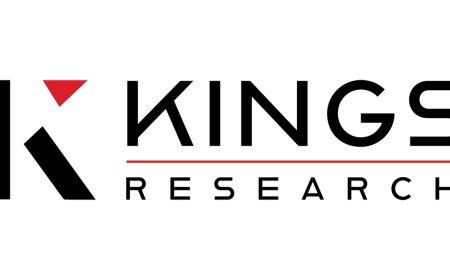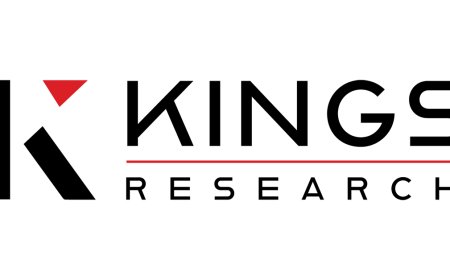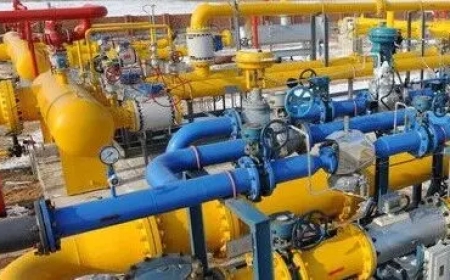Fluoroelastomer Market Size to Hit New Milestones by 2032 | Industry Growth Report
The globalfluoroelastomer marketsize was valued at USD 1056.5 million in 2024, which is estimated to be valued at USD 1080.2 million in 2025 and reach USD 1264.8 million by 2032, growing at a CAGR of 2.27% from 2025 to 2032.
Fluoroelastomers, which are a class of synthetic rubber known for their exceptional resistance to heat, chemicals, and oils, are increasingly becoming the material of choice for applications that demand superior performance under harsh conditions. These elastomers are extensively used in the manufacturing ofseals, gaskets, O-rings, and hosesthat must perform reliably in aggressive environments. Their unmatched resistance to fuels, lubricants, and corrosive chemicals makes them indispensable in mission-critical applications, which in turn is catalyzing market growth.
Rising Trends Reshaping the Fluoroelastomer Market
One of the most notable trends influencing the fluoroelastomer market is thetransition toward cleaner and more efficient automotive technologies. With global efforts to reduce carbon emissions and improve fuel economy, the automotive sector is increasingly adoptingturbocharged engines and hybrid vehicles, both of which require components that can withstand high temperatures and aggressive fluids. Fluoroelastomers provide the durability and reliability needed in such applications, particularly in fuel injection systems, exhaust gas recirculation systems, and turbocharger hoses.
Another important trend is theminiaturization and complexity of electronic devices, which is elevating demand in the semiconductor manufacturing industry. Fluoroelastomers are critical in semiconductor processes, especially where resistance to plasma and chemicals is necessary, such as in wet processing and wafer etching systems. As consumer electronics and semiconductor devices continue to advance, the role of high-purity, low-contaminant fluoroelastomers becomes increasingly vital.
Additionally,green manufacturing and sustainabilityare gaining traction across industries, compelling manufacturers to innovate with advanced formulations that deliver higher performance with a reduced environmental footprint. This is driving R&D investments aimed at developinglow-emission and eco-friendly fluoroelastomer variantsthat comply with global regulations while offering the same or better mechanical and chemical resistance.
Market Demand: Pushed by Performance and Regulation
Demand for fluoroelastomers is surging due to the material's broad spectrum of applications and growing regulatory pressures for superior sealing and thermal resistance. Stringent emission norms such asEuro 6, China VI, and EPA Tier 3in automotive are forcing OEMs to use more robust elastomeric materials that can endure high thermal loads and chemical attacks. The demand is particularly strong infuel systems, transmission components, and crankshaft sealswhere failure can lead to catastrophic system breakdown.
In thechemical processing industry, the need for durable, chemical-resistant sealing solutions in pumps, valves, and pipe fittings has bolstered the uptake of fluoroelastomers. These materials perform under continuous chemical exposure and elevated temperatures, ensuring minimal downtime and safety in industrial operations. Meanwhile, theaerospace sectordemands elastomers that meet rigorous performance and safety standards. Fluoroelastomers meet these demands, making them a preferred choice for fuel systems, hydraulic seals, and engine gaskets in commercial and military aircraft.
Themedical sectoris also emerging as a potential growth area for fluoroelastomers, especially in applications requiring sterilizable and chemically resistant materials. With the ongoing push for high-performance, biocompatible materials in medical devices, demand is expected to continue rising in this segment.
Market Dynamics: Drivers, Challenges, and Opportunities
Driversfueling the fluoroelastomer market include rapid industrialization, technological innovation, and stricter environmental regulations that necessitate the use of high-performance elastomers. Theautomotive and aerospace industriesremain the largest consumers of fluoroelastomers due to the increasing complexity of their mechanical systems and the need for longer service life of parts.
However, the market also faceschallenges. The highcost of productionand raw materials remains a major constraint. Fluoroelastomers are significantly more expensive than conventional elastomers such as nitrile rubber (NBR) or silicone, which limits their adoption in cost-sensitive applications. Additionally,supply chain disruptionsfor raw materials, particularly fluorspar and other key ingredients, can affect the availability and pricing of fluoroelastomers.
Despite these challenges, opportunities abound. The ongoingdevelopment of bio-based and recyclable fluoroelastomersis opening new avenues for sustainable application. Moreover, with the risingdemand for high-efficiency electronic components, semiconductor manufacturing is expected to offer lucrative growth opportunities in the near term.
Future Outlook: High Performance, High Growth
The future of the fluoroelastomer market looks promising, underpinned bytechnological advancements, expanding application areas, and growing environmental consciousness. The integration of AI and automation in manufacturing facilities is expected to improve product consistency and lower production costs, making fluoroelastomers more accessible.
Moreover,emerging economies in Asia-Pacific and Latin Americaare investing heavily in infrastructure and industrial automation, which is expected to drive demand for reliable sealing and insulation materials. These markets represent a major opportunity for global players seeking to expand their footprint and tap into new revenue streams.
As innovation continues to unlock new performance characteristicssuch as lower permeability, higher flexibility, and broader chemical resistancethe scope of fluoroelastomer applications is expected to widen even further. In the coming years,cross-industry collaborationsand strategic partnerships are likely to accelerate the pace of product innovation and market expansion.
Key Players Shaping the Competitive Landscape
The global fluoroelastomer market ismoderately consolidated, with several key players leading innovation, product development, and market penetration. According to Kings Research, major companies operating in the market include:
-
The Chemours Company
-
Daikin Industries Ltd.
-
3M Company
-
Solvay SA
-
Shandong Huaxia Shenzhou New Material Co., Ltd.
-
AGC Chemicals Americas
-
HaloPolymer OJSC
-
Dongyue Group
-
Shanghai 3F New Materials Company Limited
-
GFL Limited
These companies are focusing onstrategic collaborations, mergers, acquisitions, and capacity expansionsto gain a competitive edge. Additionally, many are investing insustainable material development and advanced manufacturing technologiesto cater to growing environmental regulations and customer expectations.
Market Segmentation Insights
Kings Research segments the fluoroelastomer market bytype, application, and region, offering a comprehensive overview of growth patterns.
By Type:
-
FKM (Fluorocarbon Elastomers)
-
FFKM (Perfluoroelastomers)
-
FVMQ (Fluorosilicone Rubber)
Among these,FKMholds the largest share due to its excellent chemical and thermal resistance. However,FFKMis expected to witness the fastest growth rate, especially in the semiconductor and aerospace industries, where ultra-high performance is essential.
By Application:
-
Automotive
-
Aerospace
-
Industrial
-
Semiconductor
-
Chemical Processing
-
Oil & Gas
-
Medical Devices
Theautomotive segmentremains dominant, while thesemiconductor and medical segmentsare poised for substantial growth due to emerging high-tech demands and regulatory shifts.
Recent Developments in the Industry
The fluoroelastomer market has witnessed a series of notable developments that are shaping its trajectory. For instance,Daikin Industriesrecently announced an expansion in its fluoroelastomer production capacity in China to meet growing demand in electronics and automotive. Meanwhile,Solvay SAlaunched a new line ofhigh-purity fluoroelastomerstailored specifically for the semiconductor industry, emphasizing its commitment to innovation and clean manufacturing.
In another significant move,3M Companyannounced R&D investments aimed at developingenvironmentally friendly fluoroelastomersthat reduce greenhouse gas emissions during production and disposal. These initiatives are crucial in ensuring long-term market sustainability and competitiveness.
Regional Analysis: Asia-Pacific Leads, North America and Europe Steady
Geographically,Asia-Pacificdominates the global fluoroelastomer market and is expected to retain its lead throughout the forecast period. Countries such asChina, Japan, South Korea, and Indiaare experiencing a boom in automotive production, electronics manufacturing, and industrial automation. China, in particular, is emerging as both a majorproducer and consumerof fluoroelastomers, driven by government support and strong domestic demand.
North Americaholds the second-largest market share, fueled by a mature automotive industry, advanced aerospace capabilities, and a strong presence of key market players. TheU.S.remains a key contributor to R&D and innovation in this space.
Europealso shows steady growth, with major economies likeGermany, France, and the UKactively promoting high-performance material adoption in automotive and chemical industries. Strict emission standards in the region are further catalyzing the use of advanced elastomeric materials.
In contrast,Latin America and the Middle East & Africa (MEA)are emerging markets, offering moderate growth potential due to increasing industrial activities and foreign investments in manufacturing infrastructure.
Conclusion
Thefluoroelastomer marketis on a strong growth trajectory, driven by the increasing need for high-performance, durable materials across automotive, aerospace, semiconductor, and industrial sectors. While cost challenges and raw material constraints persist, ongoing innovations and sustainability efforts are expected to reshape the competitive landscape and open new avenues for growth.
Backed by reliable market intelligence fromKings Research, stakeholders and investors in the fluoroelastomer industry are well-positioned to harness the opportunities presented by emerging applications, evolving technologies, and expanding global markets. As industries continue to demand more resilient and high-performance solutions, fluoroelastomers are set to play an increasingly vital role in shaping the future of engineering materials.
Full REPORT-https://www.kingsresearch.com/fluoroelastomer-market-2355






























